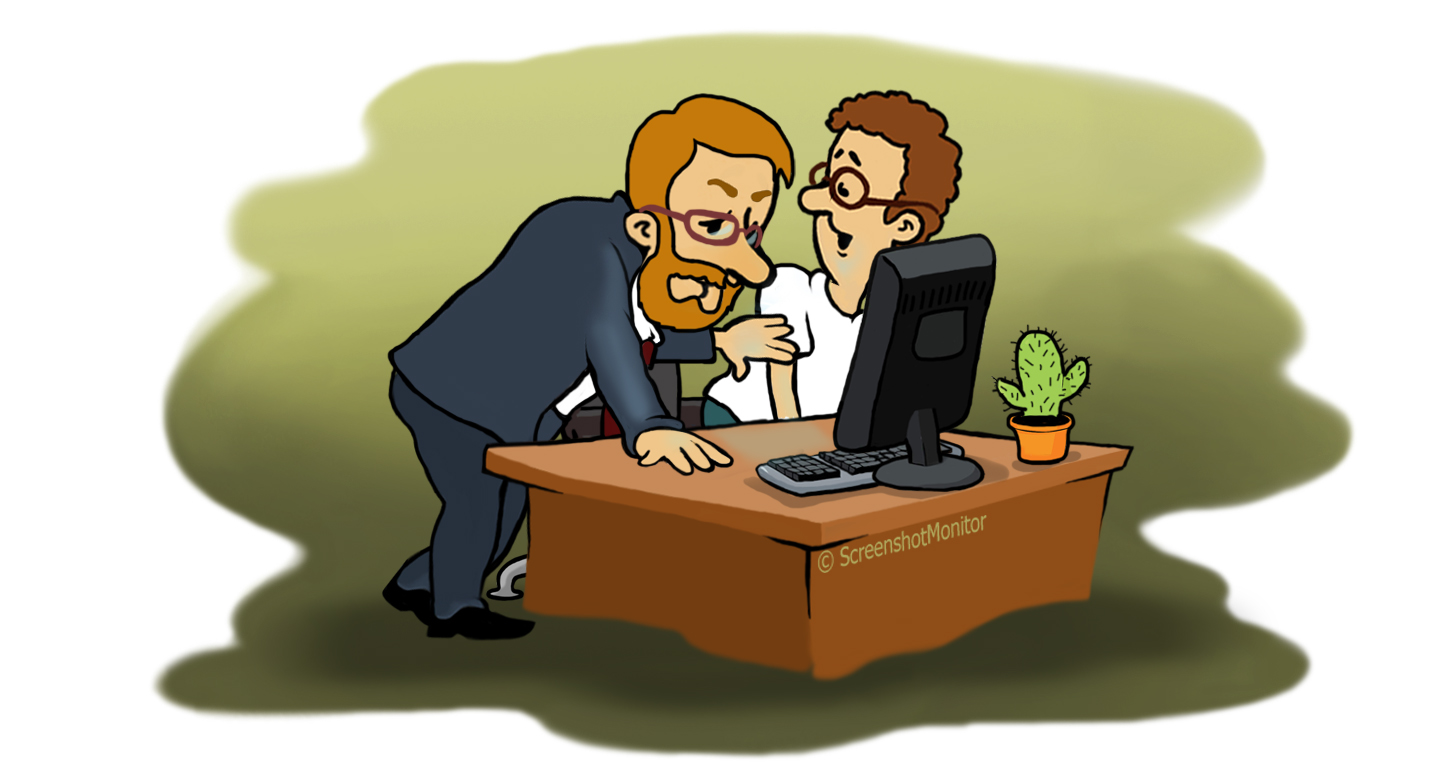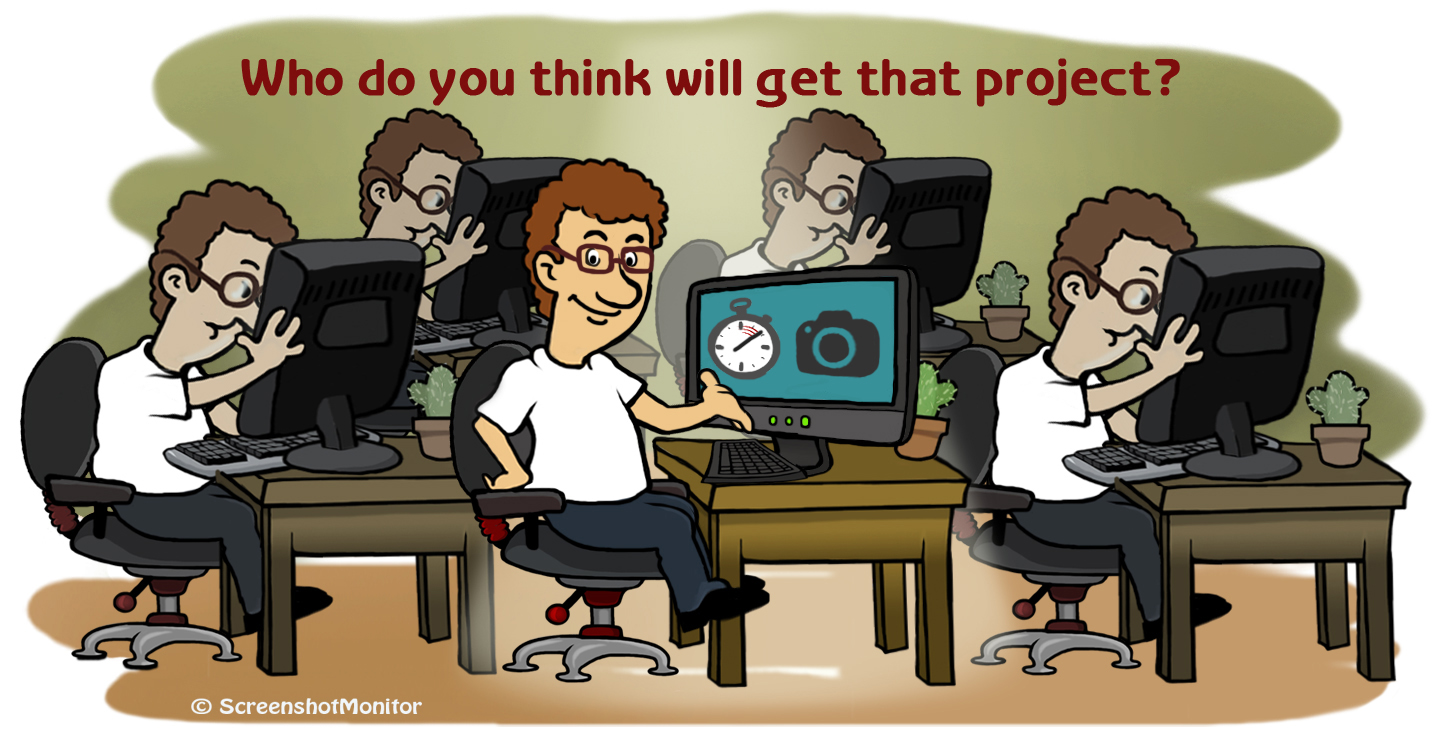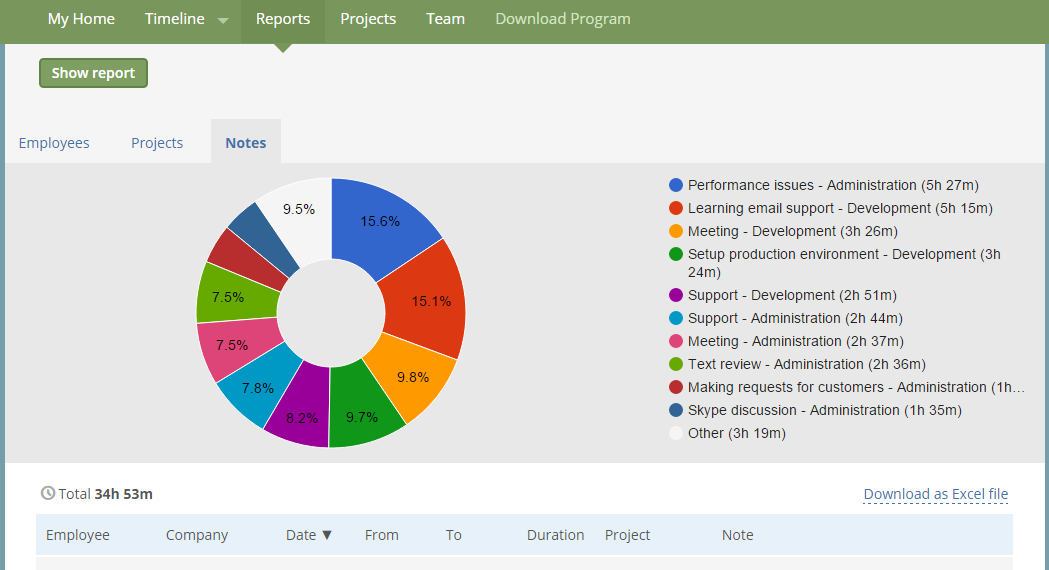Should freelancer send screenshots when tracking time?
Freelancers usually work from home and clients receive the results remotely. Since there is no physical monitoring, clients often want to use time tracking and screenshot monitoring software to supervise freelancers. While time tracking is very common, screenshot monitoring is still often met with fierce resistance by some freelancers. Should you resist or embrace screenshot monitoring? What are the Pros and Cons?

Pros of sending screenshots
1. Screenshots Ensure Less Time Waste
First thing comes first. Screenshot tracking ensures that the freelancer spends less time on activities that are not billable. The freelancer is paid for his efforts to accomplish a definite project. If he spends his billable hours to chat on Facebook, that’s not fair. A simple time tracking app – without any screenshot-taking ability – can keep a record of the period once the freelancer starts working. But without any visual report, the time tracking concept is blind.
2. Screenshots Offer a Clear Picture of Workflows
A standard time tracking software (e.g. Screenshot Monitor) takes random screenshots while the freelancer is working. The freelancer cannot manipulate this system to fool the time tracker app. If the freelancer spends time on unproductive tasks, that will also be included in those screenshots. There is no way to avoid this, because even if the employee randomly gets skipped by the screenshot taker, he won’t be able to dupe the time tracker. It will create a clear picture of how productively he is using his time.
3. Clients Get a Closer View of The Project
With a screenshot tracking tool, clients get the the latest status of their projects. It’s a great way of measuring the progress. Time tracking apps make freelancer reporting system sensible by providing screenshots and time logs, which help clients to better understand where do they spend their money.
4. The Best Way to Remote Supervision
To be fair, a job cannot be based on just some time logs, emails, and chats. It needs more ways to supervise the team members. Freelancers are working from their places and the clients are instructing them from far away. If a freelancer shares screenshots of his workflow, that can certainly establish the best way to remote supervision. The time tracking app automatically takes screenshots and time logs along with work notes, and creates detailed reports visible to both the client and the freelancer. Then they can review the work diary and make adjustments when needed. The freelancer can find his strong and weak points by reviewing the time log and comparing it with previous reports. The client also gets a way to measure the freelancer’s productivity by comparing the logs with those of other freelancers.
5. Screenshot Tracking Increases Fairness and Protects the User
Screenshot tracking can increase confidence and fairness of a freelancer. When a freelancer is aware that there is a supervisor who is monitoring his billable hours, there is less possibility of time waste. If a freelancer uses screenshot tracking apps to share pictures of his working periods, he is automatically motivated to dedicate himself to the job, because if he misuse his time, the client might not pay for the unproductive hours. This is the magic of screenshot tracking apps, which makes the freelancers more aware and fair. And in the similar way, it protects the users (both the freelancer and the client) by generating detailed work logs, which include time logs, notes and screenshots of the work progresses.
5. Clients may choose a freelancer who can submit screenshots
Given a choice between freelancers – if one of them submits screenshots while others don’t – many clients would choose the one with screenshots.
Cons of sending screenshots
1. Privacy Concern
The biggest argument against screenshot tracking is a potential privacy issue. When a time tracker is running – it can take a screenshot anytime. If the freelancer just goes to check his email for a moment, and the tracker takes a screenshot of the email inbox that could upload an image of something personal. Not every time tracking app allows the freelancer to trash any of his/her screenshots uploaded to the server. Given a choice – for any freelancer it would be much better to insist on using a screenshot monitoring service that gives freelancer full control over the submitted information like Screenshot Monitor.
2. Time May Not Be the Only Metric for All Works
Yes, the amount of time spent is not the only measurement scale for all types of works. Creative works – like painting or designing – are not well measured by time spent. Still, a screenshot tracking app can be useful in discussion the work progress or just making client at ease that the freelancer is working on his project, not something else.
3. Offline Works
Sometimes freelancers might work offline when screenshot tracking apps cannot come into the game. In such a setup, screenshot concept doesn’t work. However, users can add offline time records into the time log manually.
Summary

There are many arguments for and against the use of screenshot monitoring software. If a freelancer has nothing to hide and doesn’t mind demonstrating his work process, he should certainly use a screenshot monitoring service. Even if not required by client, it makes sense for freelancers to use such services for themselves and then share reports to clients. This would allow an honest freelancer to stand out from the crowd and show how well he/she is working. Although there are some privacy concerns with screenshots, those issues could be resolved if you use the right service (like the one from ScreenshotMonitor.com) that gives you the control to modify and possibly delete all of the submitted information.
